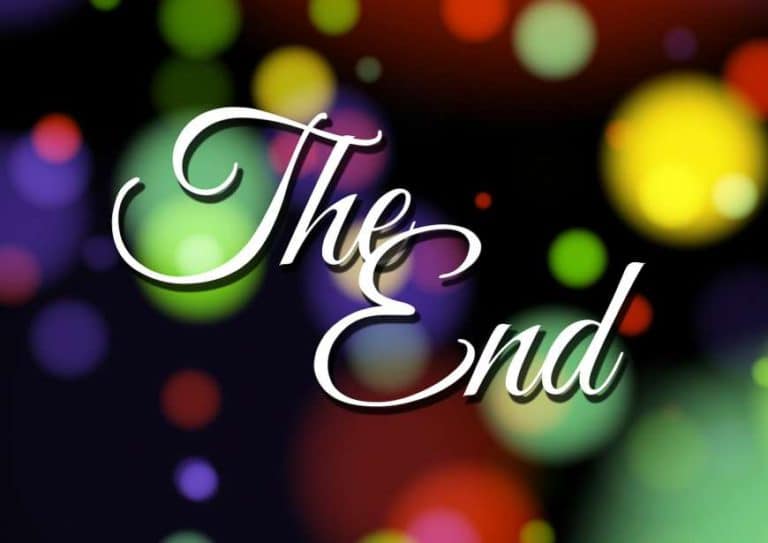Smooth Transition in a Speech – 69 Transition Statements
There are times when you listen to a speech and you wonder, how does the speaker relate these two things, or if he jumped topics and you felt completely lost. Knowing how to make a smooth transition in a speech will help you as a speaker to keep your audience engaged and on topic.
Any speech tends to be well-structured and it contains an introduction, body, and conclusion. A smooth transition is necessary between these sections for any speech to make an impact. The body or the main section of a speech may have various points and information that you convey and you have to transition between them as well.
If you ever feel so, then the speaker has not used the right transitions in his speech and it all feels out of space. In this article, we will talk about transitions in a speech and share with you 69 words or phrases that will help you connect ideas and smoothly transition between several points in your speech.
Related Article:
Signposts in Speech: Types, Examples, and Video
7 Basic Elements of Public Speaking
Why are transitions important in a speech?
Speech transition help connect the previous idea to the next, keeping the audience engaged. In conversations and presentations, it is critical to maintain a flow and make sense, that one or two words or phrases are paramount to achieve that.
Speech transitions help relate and connect your ideas and help your audience to follow and understand your words better.
Once you understand what speech transitions are, you need to find out where to put them. Typically you put speech transitions between the introduction and first main point and between each main point.
How to make your speech flow more naturally and avoid boring your audience?
There are various types of speech transitions that help a speech flow naturally and avoid boring the audience.
When the audience understands your thought process and ideas they will be drawn to the speech and not feel bored.
You need to use the perfect speech transitions between main points and within the body of the main point to avoid confusion and misunderstandings. The next section will talk about various types of speech transitions that you can use in your speech.

Transition in a Speech: Types of Speech Transitions
As we talked about before, speech transitions can be just a single word or phrase to relate points or sentences. Let’s have a look at different types of speech transitions that help make speeches to keep the audience interested.
Introduction Transition Statements
As you begin your speech, you cannot directly start making your points, you need to ease into it. You generally begin any speech by addressing your crowd and giving an introduction and this can help captivate or interest your audience. You can make use of the following phrases to introduce your topic –
- Today I will be discussing…
- We will be looking at/identifying/investigating/analyzing….
- The points that I will be discussing…
Example: Today I will be discussing various types of speech transitions.
Speech Transitions to Highlight the first point
After you are done with the introduction, you need to move on to the first point of your speech. A simple transition word can help highlight that you are making a point.
- Firstly, let’s begin with….
- To get started….
- My first point….
- I want to begin by….
Example: I want to begin by addressing the main point.
Speech Transitions to use between similar ideas
When you are talking about similar ideas, you need to tell the audience that you are transitioning between similar ideas.
- Similarly….
- Likewise…
- In the same way….
- Equally…
Example: In the same way, you can also use likewise to transition between similar ideas.
Speech Transitions to use between conflicting points
In parts of your speech, you may address conflicting points and transitions help you highlight such conflicting points.
- However….
- Conversely…
- The opposing argument….
- On the other hand….
- On the other side….
- Despite this…
- Nonetheless…
- Even so….
- We can’t ignore the fact that….
- Now let’s consider….
Example: There’s always a good and bad side to most things in life. For example, you can try to read all the interesting articles and advice online and have a wealth of knowledge. But, on the other hand, if you don’t act upon what you have learned, it’s just a waste of time.
Speech Transitions used to elaborate ideas
During any speech, you may need to elaborate on various ideas and thoughts. Using transitions in speech you can easily elaborate on your ideas and thoughts.
- In addition/Additionally….
- Moreover…
- Furthermore….
- Also…
- Besides…
Example: Furthermore, there are various types of transitions in speech that help to show cause.
Transition phrases to illustrate Numbered Points
Whenever you have a series of points you tend to number then and transition between them as follows.
- First/Firstly…
- Second/Secondly…
- The first step….
- The second step…
- Lastly/Finally….
Example – Let’s talk about how you can overcome your fear of making eye contact: First, make sure you are looking in reasonable intervals, to all the audience (left/right/up/down). Second, look at their foreheads it’s less intimidating to you and it feels like you’re looking at them in the eye for the audience. Third…
Transitions phrases to show cause
Whenever you are trying to prove a point or come to a conclusion, the audience should understand that this is what you are implying.
- Therefore….
- Consequently…
- As a result…
- Thus…
- Hence….
Example: Therefore, you need to make use of speech transitions to strengthen your speech.
-
8 THINGS YOU CAN DO TO ACE ANY JOB INTERVIEW

The happiness when receiving a call marking the job interview gives rise to endless anxiety. After all, it’s only a few minutes to prove your worth, impress the recruiter and seize the opportunity. However, to do well at the job interview, you need to think about what you will say, how you will present yourself,…
-
An Easy Guide to All 15 Types of Speech

We keep learning that there are three types of speeches, informative speeches, persuasive speeches and special occasion speeches. However, I believe and know that there are many more such as debates, motivational speeches, forensic speeches, impromptu speeches, eulogy, and so on. Here’s a growing list of over 13 types of speech and tips on how…
Transition Phrases to give an example
To make your words and thoughts more powerful, you make use of examples. You can just talk about an example by making the following transitions.
- For example…
- For instance…
- As an example….
- Take the case of/example of….
- Let me illustrate this by…
Example: We always have to make some sacrifices and changes in our day to day life to experience a new way of life. For example, if you start waking up just an hour or two earlier compared to now, you have just gained extra time to meditate, exercise and plan your entire day..
Transition Statements to demonstration
Whenever you have a demonstration set up for your speech, you can use transitions to move to the demo.
- Let me demonstrate this…
- To explain this further, I’ll show you a demo….
- I’ll conduct an experiment to prove this theory…
Example: To explain this further, I’ll show you a demo between speeches with and without transitions.
Transition phrases to mention quotes
When you pull facts and quote someone, you need to mention it in the following way –
- Y said….
- In 1969, Y said…
- This was pointed out by Y, he said…
Example: William Shakespeare said “All that glitters is not gold”.
Transition to a side note
- On a side note…
- Incidentally…
- That reminds me…
Example: That reminds me of an example that I’d like to give to make my point more clear.
Transition to another speaker
When you have a co-speaker or someone to explain some part of the speech and you need to transition to them, you can use the following transition phrases –
- Now for the next topic, we have X…
- I’ll pass the mic to X, who will talk about….
- To guide us through a demo, we have X…
- Now X will talk about…
Example: Now for the next topic, we have Eric to talk about various speech transitions.
Transition to an earlier point
There are some parts in a speech where you may need to recall an earlier point and this can be done as follows –
- Let’s return….
- Let’s go back to…
- Let’s revisit….
- Do you recall…
Example: Remember when we spoke about trolls? Let’s dive deep into that now.
Transition to a visual aid
When your speech is backed up by charts and various visual data that can be displayed to the audience, you may need to show it to them and you transition by the following phrases –
- This table indicates…
- As you can see…
- I’d like to show you/direct your attention to…
- This diagram….
Example: The next slide shows us how our results have increased this month. As you can see here, the number of sales is especially high during the weekends.
Transition at the end of a point
Once you are the end of a point you need to conclude the point, provide a brief summary and address the next point.
- In the first part of speech….
- Now I’d like to move on to…
The transition from Speech to Conclusion
Once you are at the end of your speech, you need to provide a brief summary or conclusion to make sure your audience has understood the main points of your speech and you can be open to any questions or doubts. You can use the following speech transition phrases –
- The summary is….
- In conclusion…
- In short….
- Let’s recap what we’ve covered…
- Let’s summarize the key points…
Example: In conclusion, speech transitions are necessary to make a speech flow flawlessly.
Communications Coach Expert Alex Lyon shares an interesting video on Youtube with tips on how to effectively use Transition Statements for Public Speaking. Check it out below:
Smooth Transition in a speech helps to stitch together a perfect dress that is your speech. They are hardly take up any space in your speech but are essential and effective. Without such transitions, any speech may seem poor and of lesser quality.
The audience also needs to be able to follow and understand your speech and for that to happen you need to make use of perfect speech transition phrases.
REFERENCES & FURTHER READING
https://franticallyspeaking.com/effective-speech-transitions-how-to-make-your-speech-flow/
https://virtualspeech.com/blog/speech-transitions-words-phrases









